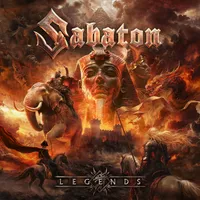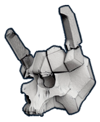Legends - Sabaton New Album

The Saga Behind the Songs
When I think of Sabaton, I picture a war-driven storytelling machine, Swedes who built their career on historical narratives sung through metal filled with theatrical intensity. They’ve always drawn from battles, heroes, and epic figures as their raw material, and now with Legends they return to that legacy but this time focusing on individual legendary figures instead of grand conflicts. It’s an immersion in the symbolic, where every track aims to be a thematic monument.
Among these figures are names like Julius Caesar, honored in the track 'Crossing the Rubicon', Joan of Arc, celebrated in 'Maid of Steel' and the samurai Miyamoto Musashi, whose path inspires the powerful 'The Duelist'. Each of them serves as a historical portrait turned into a musical epic, reinforcing the band’s ability to transform biography into battle.
First Impact: Crowns and Sonic Swords
When 'Templars' starts playing, I feel an immediate explosion of style, choirs, dramatic guitars, and an atmosphere of instant grandeur. Then 'Hordes of Khan', inspired by the legacy of Genghis Khan, strikes with intensity, pulling toward pure power metal territory, while 'Crossing the Rubicon' resonates with hooks that evoke classic Sabaton. The album doesn’t waste time: it imposes its presence, aiming to impress from the start and sustain that energy to the end.
This thematic approach makes each track sound like a chapter in an epic book, and in 'Crossing the Rubicon', dedicated to Julius Caesar, that feeling is spot on: crossing a point of no return, just as the Roman general did in history.
Coherence, Contrasts, and Elevated Identity
Although the conceptual format of Legends gives each song its own theme, the album sounds like a solid, unified piece. In moments like 'A Tiger Among Dragons', there are more atmospheric textures, and the closing track 'Till Seger' is sung in Swedish, though still imposing. The album moves between explosion and calm without losing cohesion, preserving that grand, unmistakable Sabaton identity.
Even with such distinct subjects, from the spiritual heroism of Joan of Arc to the warrior philosophy of Miyamoto Musashi, the album maintains a coherent narrative thread, where courage and honor are the blood that connects each track.
My Immersion: Between Swords and Echoes
Legends feels like an album that doesn’t ask for lightness. It works as a parade of historical figures turned into sound, with its highs and lows, its moments of grandeur and restraint. To me, it’s a solid and ambitious return: Sabaton reaffirms that the past isn’t dead, it still beats through instruments and voices.
I see this record as a piece that cements their place in their own legacy: they don’t reinvent radically, but they refine what they’ve always done best. By transforming figures like Julius Caesar, Joan of Arc, and Miyamoto Musashi into metallic anthems, the album becomes a true compendium of universal legends, translated into guitars, choirs, and fire.
If you’re into power metal rich with history, epic choirs, and melodies that roar in unison, Legends earns its place in your collection. It hits hard, yet still echoes high on your playlist.


